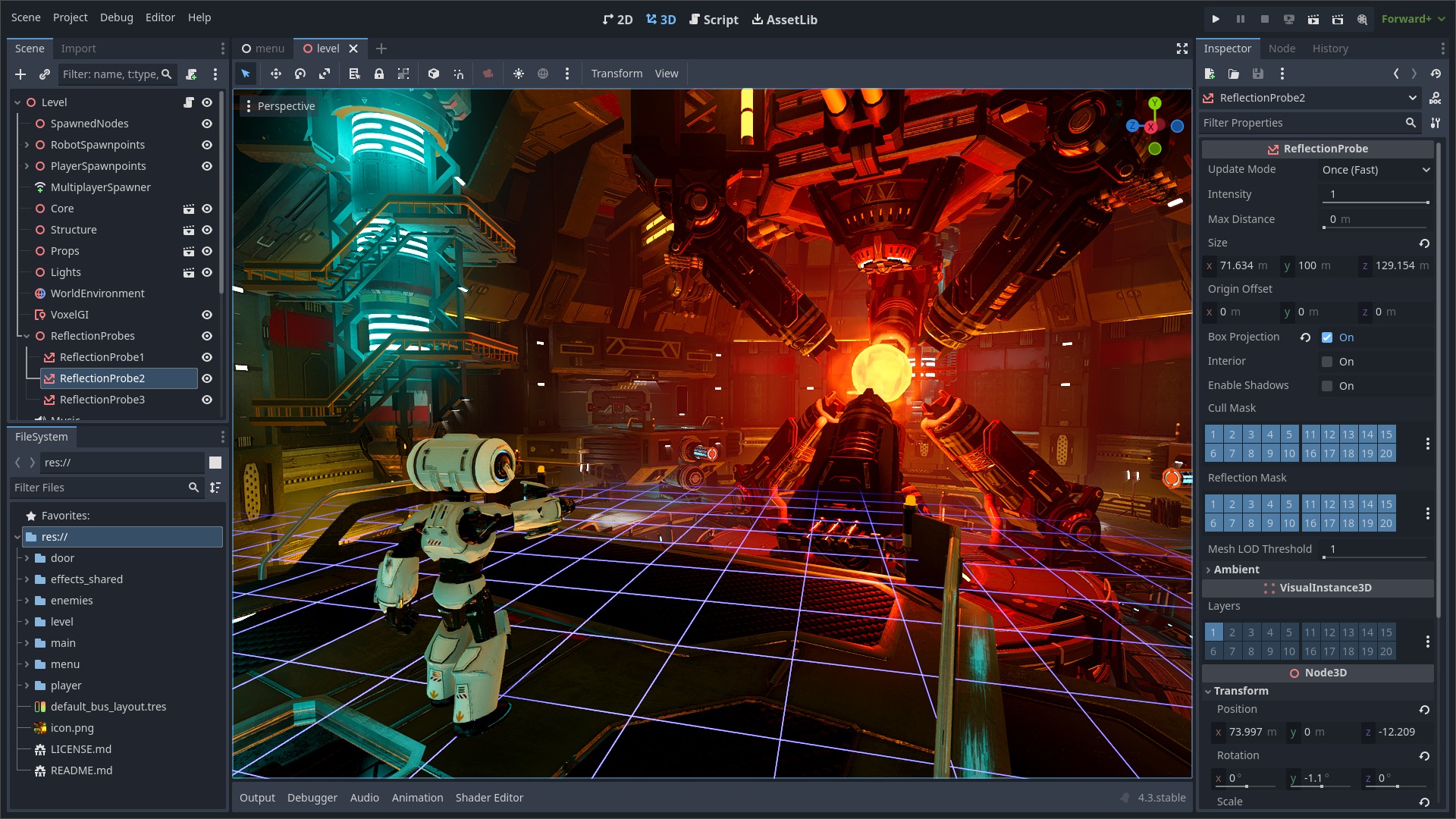The root cause of the issue is that OpenGL ES 2 does not support the `textureCubeLod` function. There are (optional) extensions to support this, but they don't appear to be exposed with the ES2 renderer (even though the hardware needed to support LOD features are certainly available.) The existing shim in `drivers/gles2/shaders/cubemap_filter.glsl` just creates a macro: ``` #define textureCubeLod(img, coord, lod) textureCube(img, coord) ``` But the third parameter of `textureCube` is actually a mip bias, not an absolute mip level. (And it doesn't seem to work regardless.) In this specific case, the `cubemap_filter` should only sample from the first level of the "source" panorama cubemap. In lieu of a method to force a lod level of zero, I've chosen to comment out the switchover from a 2D equirectangular panorama to the cubemap version of the same image, therefore always sampling roughness values from the 2D equirectangular panorama. This may cause additional artifacts or issues across the seam, but at least it prevents the glaringly obvious black areas. --- This same issue (no fragment texture LOD support) has rather large repercussions elsewhere too; it means materials with larger cubemap density (i.e. planar or distant objects) will be far rougher than expected. Since GLES 3 appears to properly support fragment `texture*Lod` functions, switching to the GLES 3 backend would solve this problem. --- Root cause discovered with help from @KaadmY. |
||
|---|---|---|
| .github | ||
| core | ||
| doc | ||
| drivers | ||
| editor | ||
| main | ||
| misc | ||
| modules | ||
| platform | ||
| scene | ||
| servers | ||
| thirdparty | ||
| .clang-format | ||
| .editorconfig | ||
| .gitattributes | ||
| .gitignore | ||
| .mailmap | ||
| AUTHORS.md | ||
| CHANGELOG.md | ||
| compat.py | ||
| CONTRIBUTING.md | ||
| COPYRIGHT.txt | ||
| DONORS.md | ||
| gles_builders.py | ||
| icon.png | ||
| icon.svg | ||
| LICENSE.txt | ||
| LOGO_LICENSE.md | ||
| logo.png | ||
| logo.svg | ||
| methods.py | ||
| platform_methods.py | ||
| README.md | ||
| SConstruct | ||
| version.py | ||
Godot Engine
2D and 3D cross-platform game engine
Godot Engine is a feature-packed, cross-platform game engine to create 2D and 3D games from a unified interface. It provides a comprehensive set of common tools, so that users can focus on making games without having to reinvent the wheel. Games can be exported in one click to a number of platforms, including the major desktop platforms (Linux, macOS, Windows), mobile platforms (Android, iOS), as well as Web-based platforms (HTML5) and consoles.
Free, open source and community-driven
Godot is completely free and open source under the very permissive MIT license. No strings attached, no royalties, nothing. The users' games are theirs, down to the last line of engine code. Godot's development is fully independent and community-driven, empowering users to help shape their engine to match their expectations. It is supported by the Software Freedom Conservancy not-for-profit.
Before being open sourced in February 2014, Godot had been developed by Juan Linietsky and Ariel Manzur (both still maintaining the project) for several years as an in-house engine, used to publish several work-for-hire titles.
Getting the engine
Binary downloads
Official binaries for the Godot editor and the export templates can be found on the homepage.
Compiling from source
See the official docs for compilation instructions for every supported platform.
Community and contributing
Godot is not only an engine but an ever-growing community of users and engine developers. The main community channels are listed on the homepage.
To get in touch with the engine developers, the best way is to join the #godotengine-devel IRC channel on Freenode.
To get started contributing to the project, see the contributing guide.
Documentation and demos
The official documentation is hosted on ReadTheDocs. It is maintained by the Godot community in its own GitHub repository.
The class reference is also accessible from the Godot editor.
The official demos are maintained in their own GitHub repository as well.
There are also a number of other learning resources provided by the community, such as text and video tutorials, demos, etc. Consult the community channels for more information.


